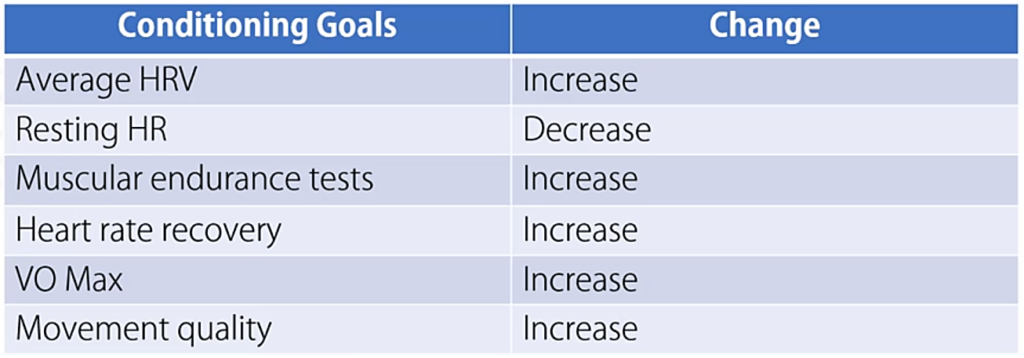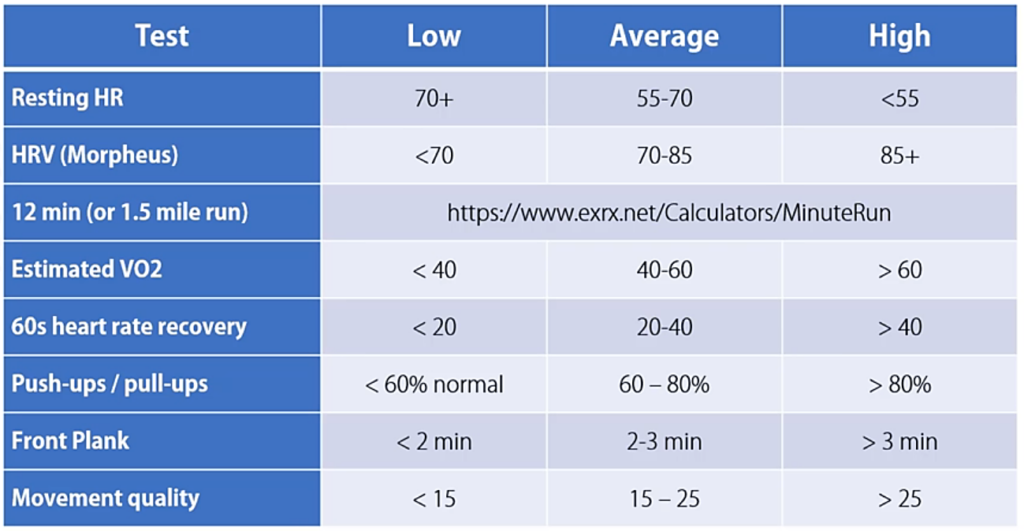Today’s focus is on setting the right goals for your conditioning program. If you haven’t completed the conditioning assessment we covered in Day 1, make sure to do that—you’ll use your results to identify your program goals in this part of the challenge.
If you have any questions during this process, ask them on the group Facebook page or by responding to the daily challenge email. I want to make sure you have the support you need to successfully write your own program.
Now let's dig into the kind of goals you should set to improve your conditioning the most.
What kind of goals should you set?
Program goals help keep us motivated to train, give us a measure to track progress, and narrow our focus to prioritize the most important limiting factors of conditioning.
But what kind of goals should you set?
Simply put, your goals should be based around tangible measurements of conditioning, since this is the only way to track progress.
That's where yesterday’s conditioning assessment comes into play. Once you have your baseline measurements of HRV, resting HR, muscular endurance tests, HR recovery, VO2max, and movement quality, you can track changes over time and gauge improvement.
In general, the following changes indicate progress:
Using your assessment to set the right goals:
The following table represents general averages and norms for the conditioning tests you performed in your assessment.
You can identify your weakest areas of conditioning by comparing your assessment results to the values below.
You can use this 12-minute run calculator to estimate your VO2max.
Notice that you should compare your push-up, pull-up (or stationary arm hang), and plank results to your normal, rested values (e.g. if you can normally do 50 push-ups and you complete 42 push-ups after the 12-min test, you have a high level of fitness in that area).
This will give you insight into how your performance changes as you fatigue.
How to set the right goals:
Now that you know how your conditioning stacks up to relative norms, you can identify your program goals.
Always focus on improving your biggest limiting factors first. This is the fastest way to see the largest increases in your conditioning.
Each 8-12-week conditioning program should focus on achieving only 2-3 goals around a specific area (as opposed to trying to improve everything at once).
In general, the goals you set should be:
- Specific
- Measurable
- Important
- Realistic
If your goals fit these criteria, they’ll guide your program in a meaningful way to help you improve your conditioning.
Case study:
If an athlete has average general conditioning but poor muscular endurance, start by improving specific muscular endurance metrics, such as increasing front plank time from 45 seconds to 2 minutes.
This is an example of a specific, measurable, important, and realistic goal that you can build a conditioning program around. The fastest way to improve this athlete’s conditioning is by eliminating their weakest area (which is muscular endurance, in this case).
Today’s challenge:
Download the worksheet below to evaluate your assessment results in terms of general conditioning markers, muscular endurance, movement quality, and overall performance.
File download: Day Two Program Goals Worksheet
Once you’ve examined your results, identify the one area of your conditioning that needs the most improvement. Use this area to set a single specific goal for your own conditioning program.
Tomorrow, we’ll use this goal as we cover how to structure your training week.
I know that I’ve condensed a lot of complex conditioning concepts and research into a short space. That’s because I really want to make sure you finish this challenge with a complete conditioning program of your own.
But I also know that this can be overwhelming. If you want to truly understand why I do each step of this program-creation process so you can manipulate the rules and apply them to any situation, that’s something I cover in detail in my online conditioning certification.
I’ll take you all the way to conditioning program mastery, so you can write programs like it’s second nature—no more laboring through each step of the process.
Registration opens on September 10th, but I’m offering a $200 discount to everyone who joins my free Insiders List before then.
If you’d like to set yourself apart as a true conditioning expert, I invite you to reserve your spot (and save $200) by filling out the form below:

